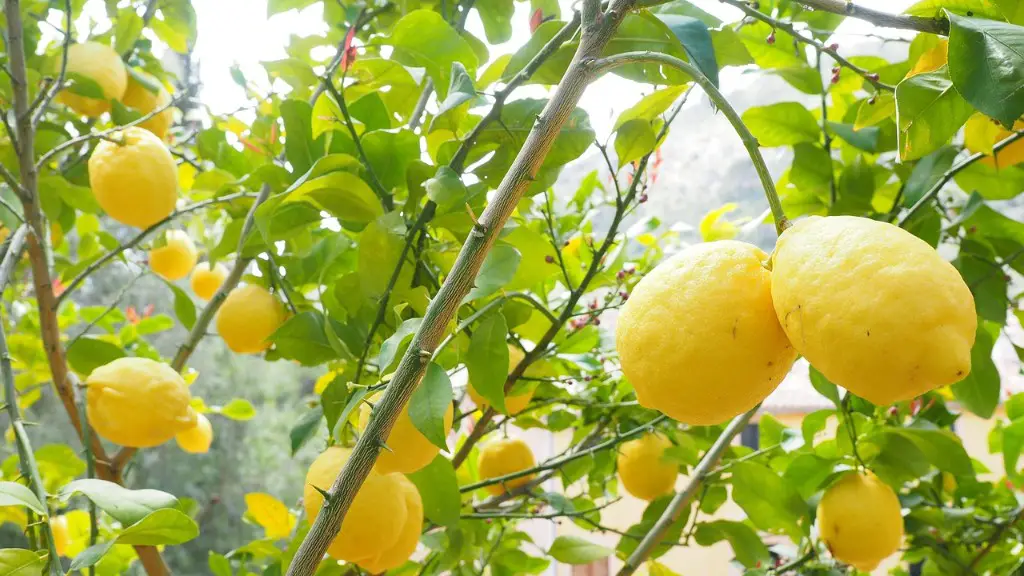Can I cut the top off my lemon tree? Yes, you can prune the top of your lemon tree as long as it’s done properly. Pruning the top of the tree can bring many health benefits, including healthier branches and improved air circulation through the canopy. Strategically pruning your tree can also help it reach its maximum growth potential. Here’s what you need to know before pruning the top of your lemon tree.
Check for pests and diseases
Before you prune your tree, you should examine it for signs of disease or pests. Common pests found on lemon trees include mites, aphids, and whiteflies. If you find any of these pests on your tree, you should treat them immediately by spraying them with an insecticidal soap, or introducing beneficial insects such as ladybugs. You should also look for signs of disease, such as discolored leaves or spots on the fruit. If you spot any of these signs, you should speak to a tree care professional before pruning your tree.
Check the tree’s shape
When pruning the top of your lemon tree, it’s important to consider the tree’s shape. While pruning can help improve an existing shape, it’s best to avoid drastic changes. Pruning should be done in small increments and should follow the existing structure of the tree. For example, if the tree is naturally conical, the pruning should follow that shape.
Remove dead branches
When pruning the top of your lemon tree, it is important to remove any dead, diseased, or broken branches. These branches may be taking away nutrients and vigor from the tree, and removing them can help the tree heal itself. You should also look for any branches that are crossing and rubbing against each other and remove them, as this can encourage disease.
Crown Reduction
When pruning the top of your lemon tree, you may want to consider a crown reduction. This is a good choice if you want to limit the size of your tree. Crown reduction involves shortening and thinning specific branches in order to achieve the desired crown shape and size. When reducing the height and spread of the crown, be sure to leave some lateral branches for growth.
Leave the Leader branch
The “leader” branch is the central, vertical branch of the lemon tree. It’s important to keep this branch intact and untouched, as it is the tree’s main framework and will provide future structure. The leader branch should be left alone, as trimming it can stunt the tree’s growth and compromise its structure.
Be careful
Lemon trees are delicate and can be easily damaged if pruned incorrectly. When pruning the top of your tree, use clean, sharp pruning shears, and be sure to make your cuts at a 45-degree angle. Make sure to keep your cuts away from the main branch collars, as they are vital to the trees’ health. When in doubt, it’s always best to speak to a certified arborist before pruning.
Type of Pruning for Lemon Tree
When pruning your lemon tree, you may need to use a combination of techniques. Depending on your desired outcome, you may need to use a combination of thinning, shearing, deadheading, and selective pruning. Thinning involves removing individual branches to reduce density and improve air circulation, while shearing is used to create a pleasing shape. Deadheading is the removal of dead flowers, and selective pruning is the removal of specific branches to direct growth or control size.
When is the Best Time to Prune a Lemon Tree?
Lemon trees should generally be pruned during the dormant season, which is typically during the winter months. During this time, the tree’s growth is slowed, and it’s easier to spot damaged or diseased branches. Pruning too late in the season can affect the tree’s ability to bear fruit, and can also cause damage to nearby buildings or structures.
Pruning Tools
When pruning your lemon tree, make sure to use sharp, clean pruning tools, such as shears or pruning saws. Avoid using dull tools, or tools that have been used for other plants, as this can cause damage to the tree. Clean your tools after each session in order to avoid spreading disease from one tree to another.
Structure Support
Lemon trees may need additional support if they are too tall or have a heavy crop of fruit. You can provide support by using staking or trellising, or by installing braces or rope ties. These methods will help provide support for the tree and will help prevent branches from snapping or breaking due to weight.


